We began our tour of Brandenburg at the Polish-German border in Słubice, located across the Oder River. A bridge connects the two cities, Słubice and Frankfurt (Oder), and interestingly, before 1945, they were one city. It was only the change of borders after World War II that divided them into two separate towns.
Although heavily damaged during the war, Frankfurt (Oder) is worth visiting. We spent a day there, and I hope this post will encourage you to take a short trip to this city. Before I start, I want to highlight that many historic buildings have not been rebuilt. This makes Frankfurt (Oder) a city that prompts reflection on how much war can take away.
I invite you to join me as I recount what’s worth seeing in Frankfurt (Oder).
Table of Contents
What to Know About Frankfurt (Oder)?
Frankfurt (Oder) is a city with over 750 years of history and a population of just under 60,000. Currently, it is the fourth largest city in Brandenburg.
As mentioned in the introduction, after the Potsdam Agreement, Frankfurt became a border town, and the former Dammvorstadt district became the Polish town of Słubice. Previously, due to battles between the Red Army and retreating German troops, Frankfurt (Oder) was destroyed by nearly 93%—a fact I want to emphasize, as it makes Frankfurt a city that invites reflection. The contrast between new and old architecture reminds us of the costs of war. While there may not be the most beautiful historic townhouses here, every remaining piece of history is appreciated all the more for it.
It’s worth taking a walk around the city, and today I invite you on such a walk, starting from Słubice.
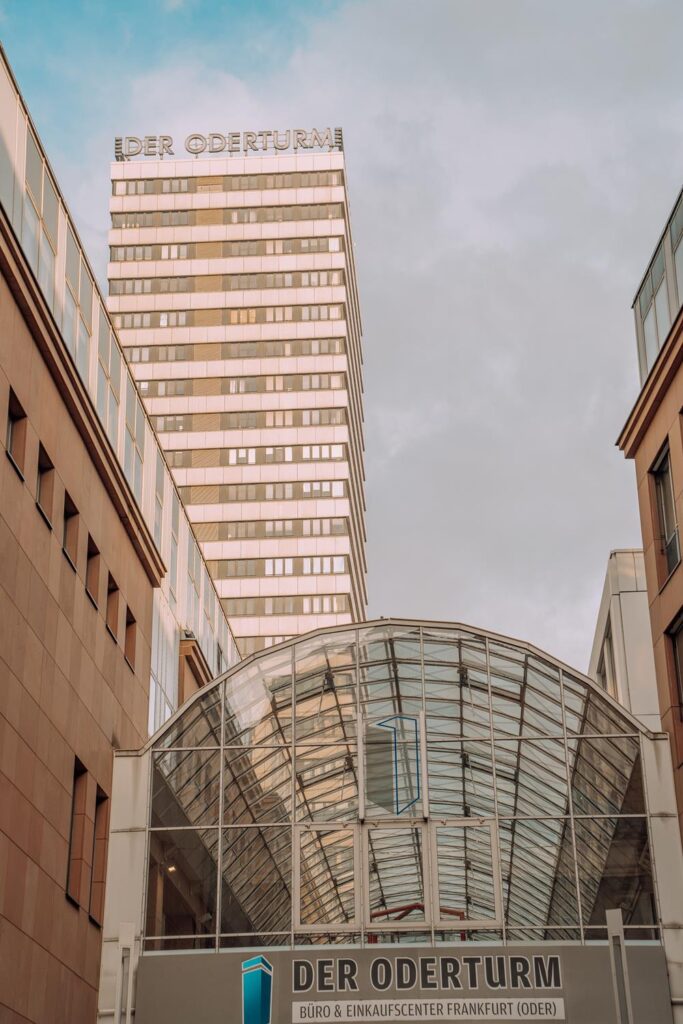
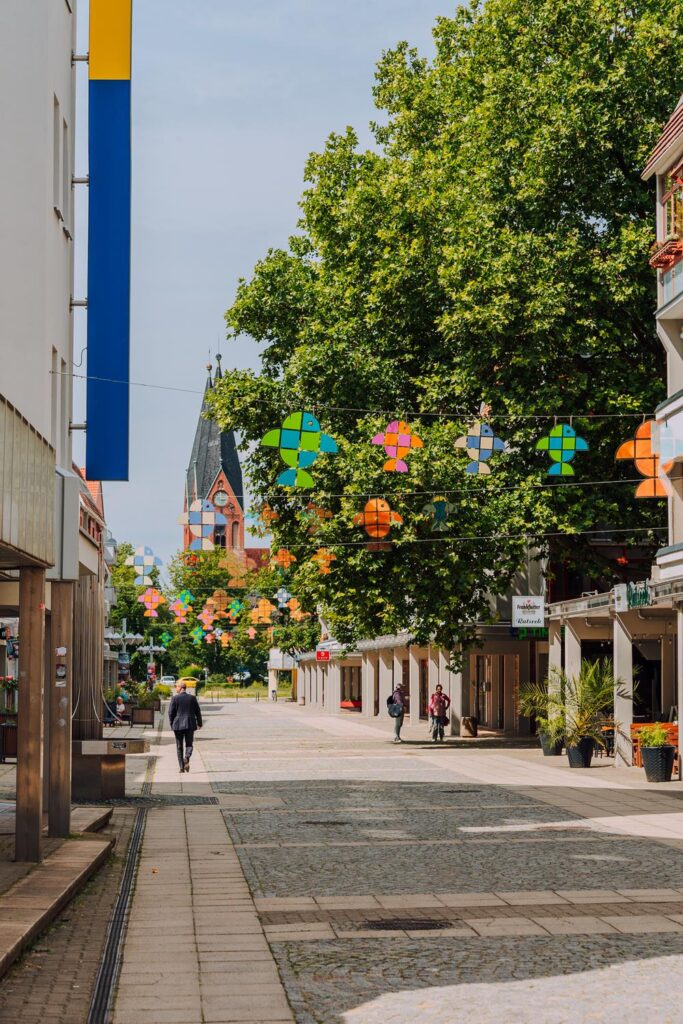
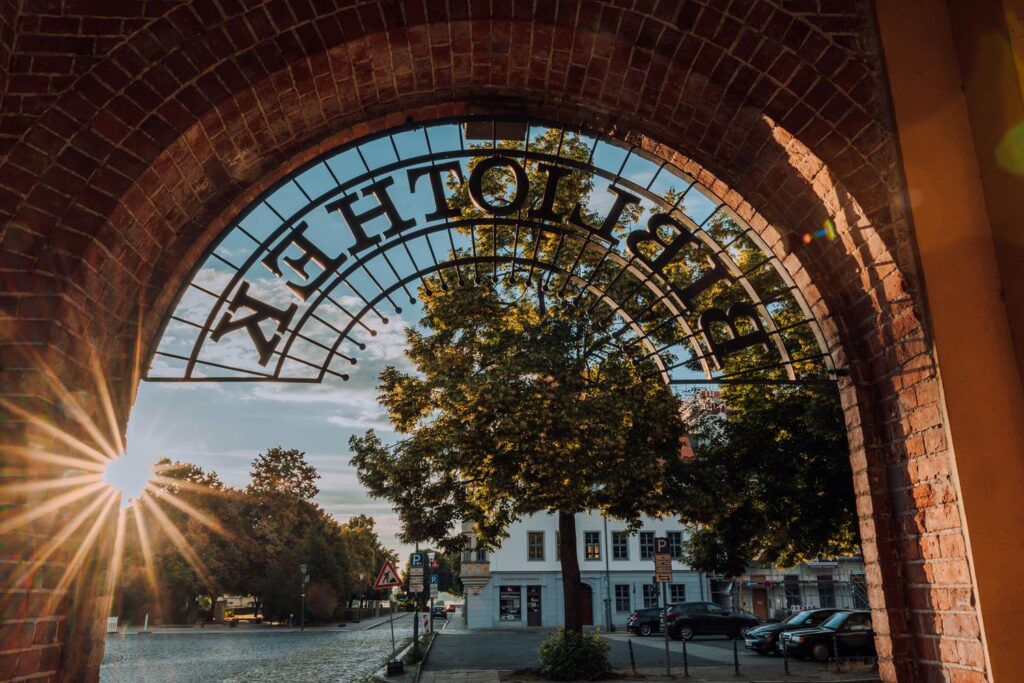
Wikipedia Monument
Various initiatives and ideas exist to commemorate the contributions of Wikipedia and its contributors. One of these is located in Słubice, near the Polish-German border. It commemorates Wikipedia as a source of knowledge and a symbol of intercultural cooperation, as well as a tool promoting openness and free access to information.
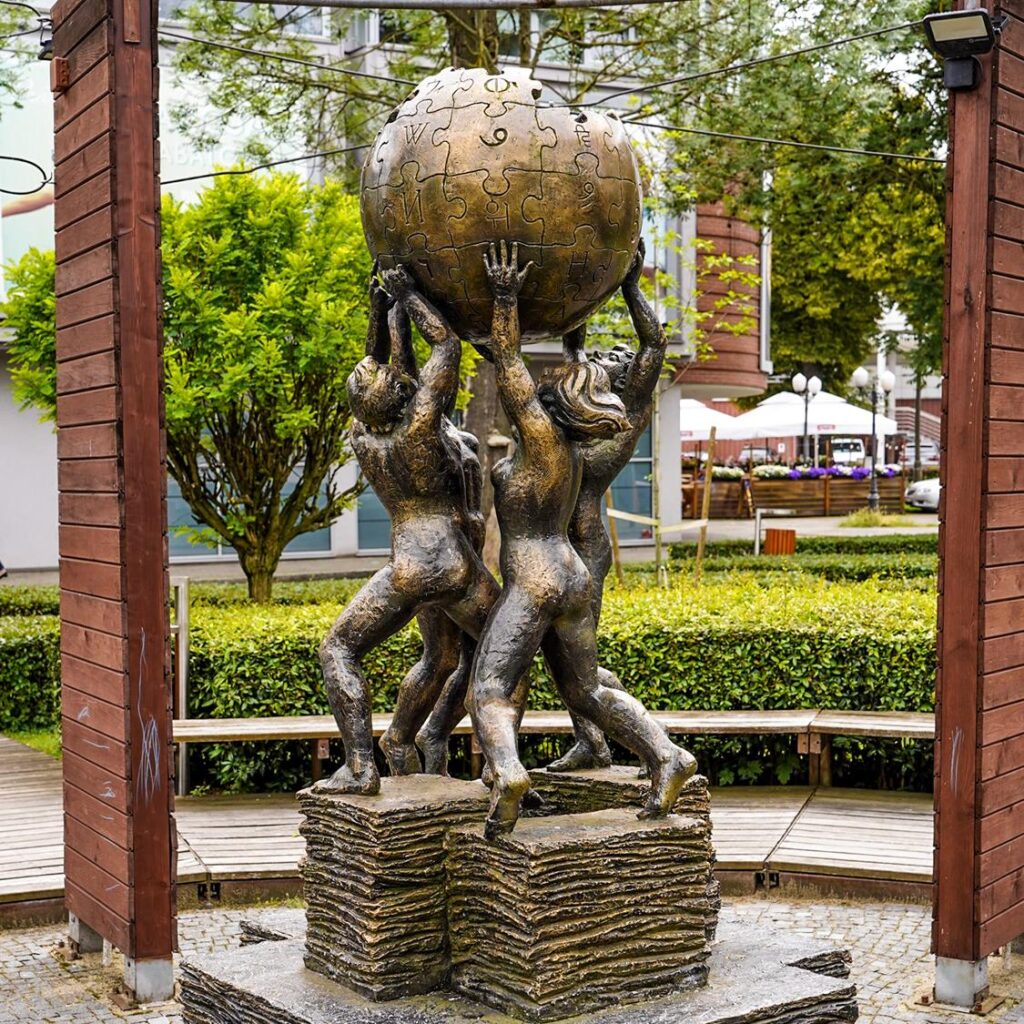
Viewpoint over Frankfurt
Here, it’s worth noting the European University Viadrina, with faculties on both the German and Polish sides. In Słubice, there’s a terrace on the roof of Collegium Polonicum, where you can admire the panorama of Frankfurt. It’s especially picturesque at sunset. The key can be picked up from the porter’s lodge.
Next, we cross the border via the bridge connecting the two cities and find ourselves on the German side.
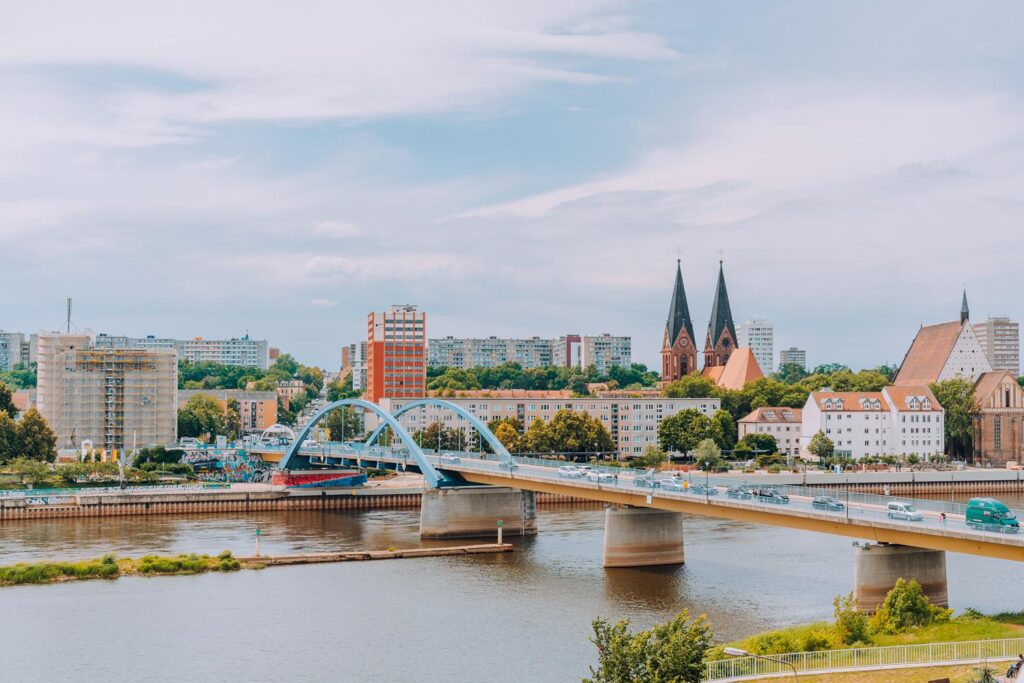
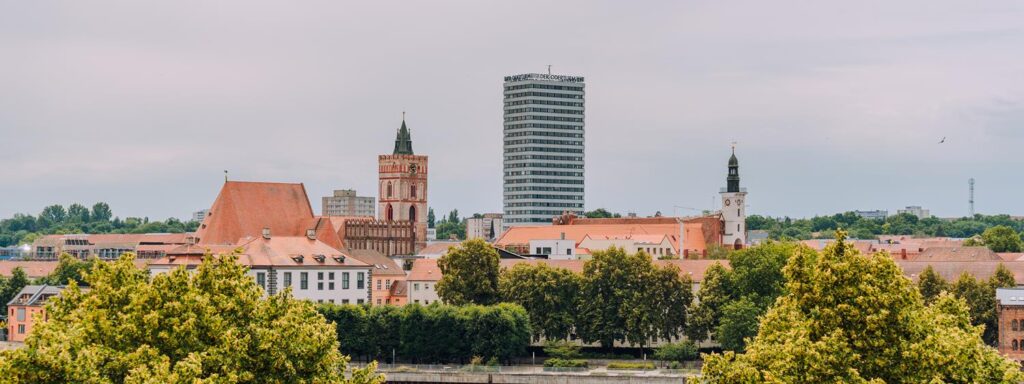
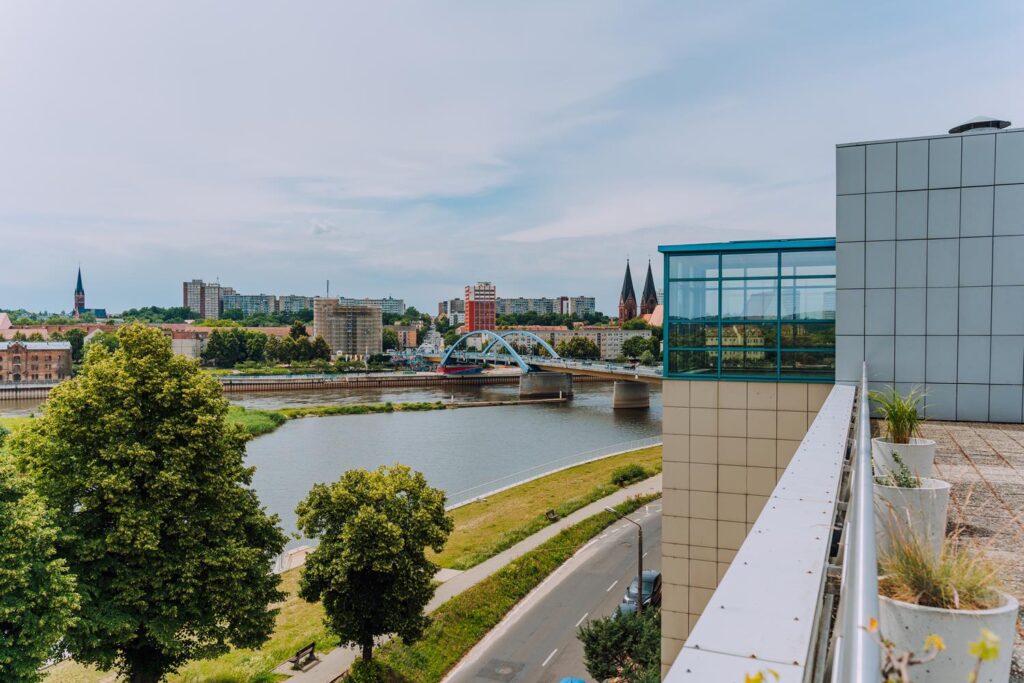
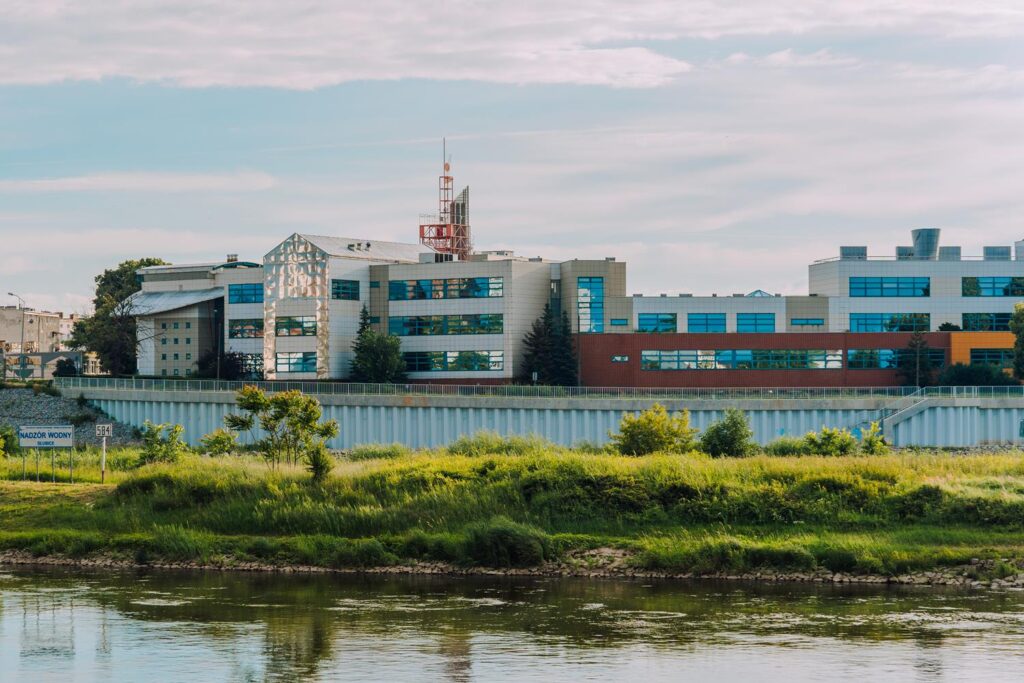
Town Hall
The Gothic town hall in Frankfurt (Oder) is truly beautiful. Built in the 14th century, it has long served as the administrative heart of the city. Its architecture is a real gem of Gothic style, with impressive pointed arch windows and a facade adorned with incredible precision and richness of detail. Walking along its walls, one can admire the craftsmanship of the old building masters.
It resembles the town hall in Lübeck and, although significantly damaged during World War II like many other buildings in Frankfurt (Oder), it was carefully rebuilt after the war, preserving many original elements and details.
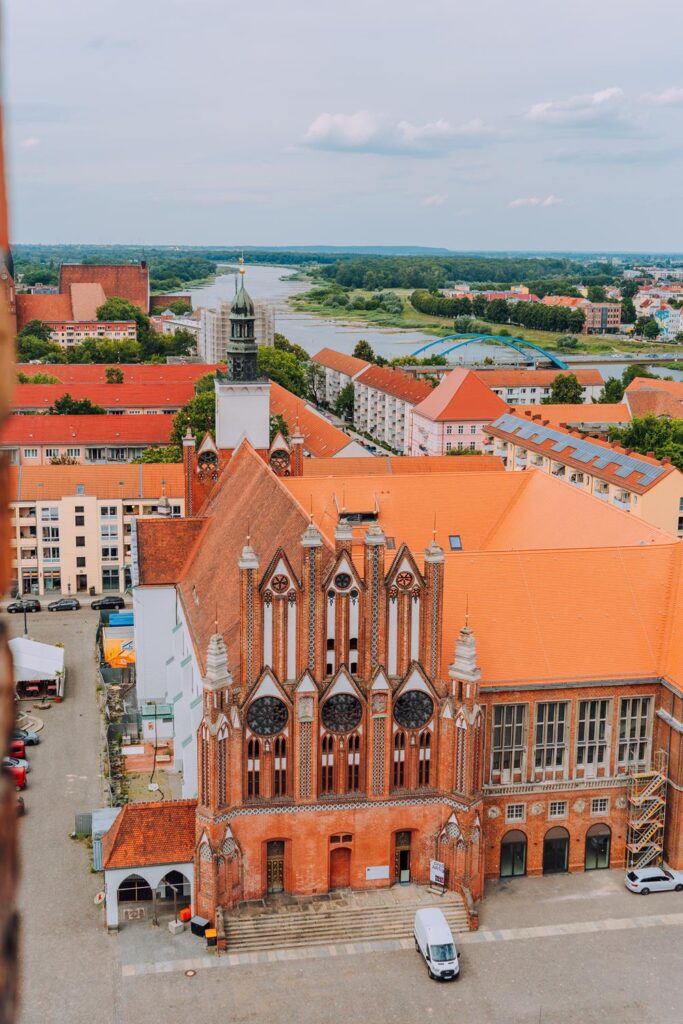
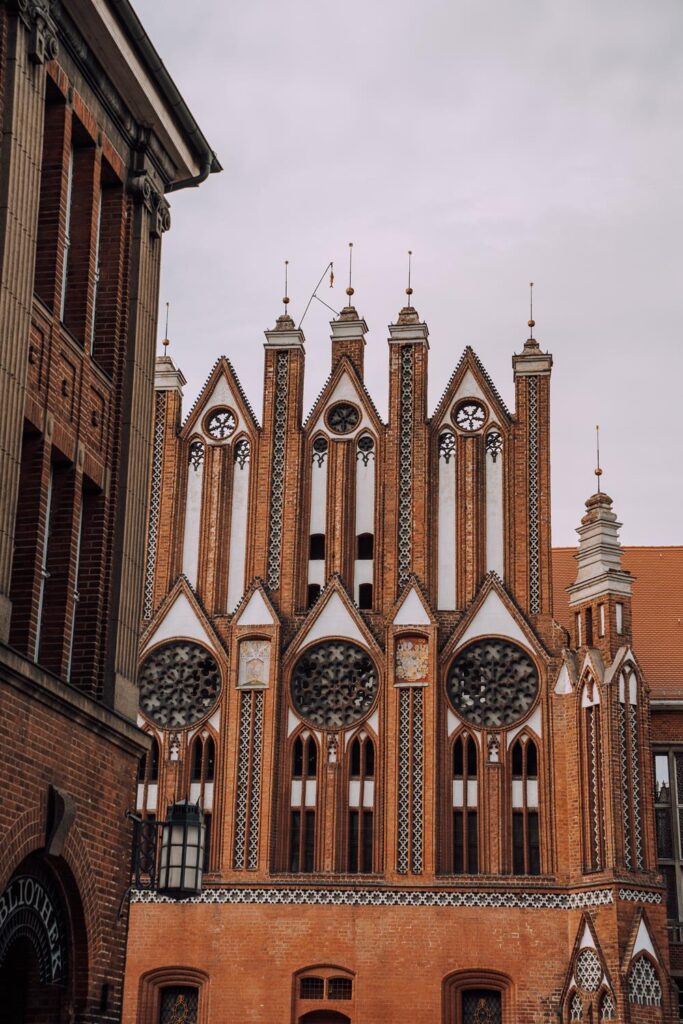
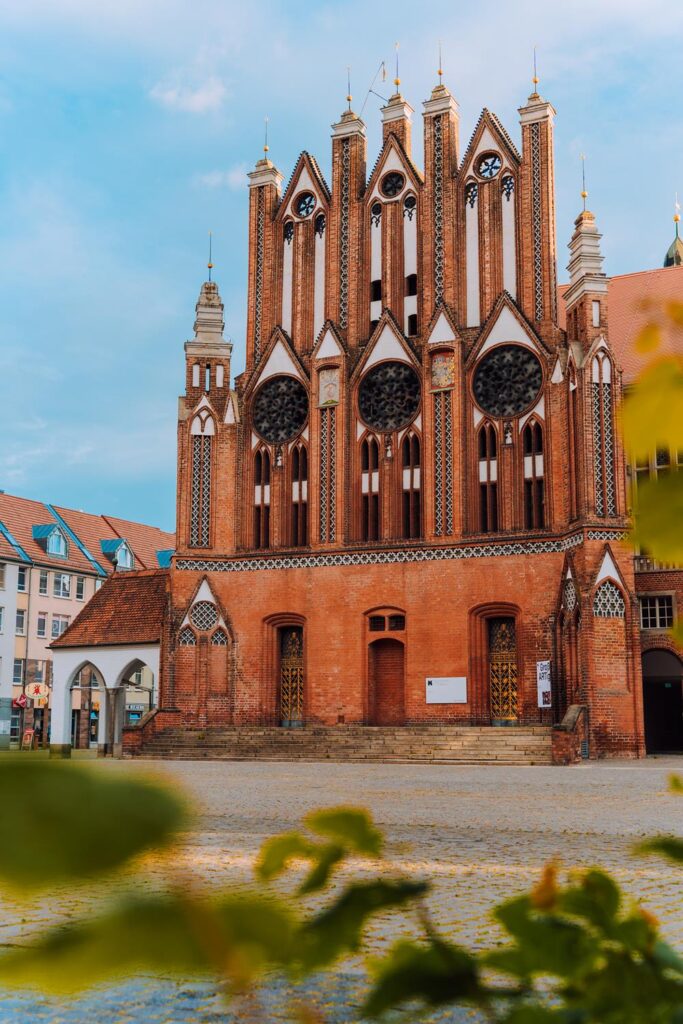
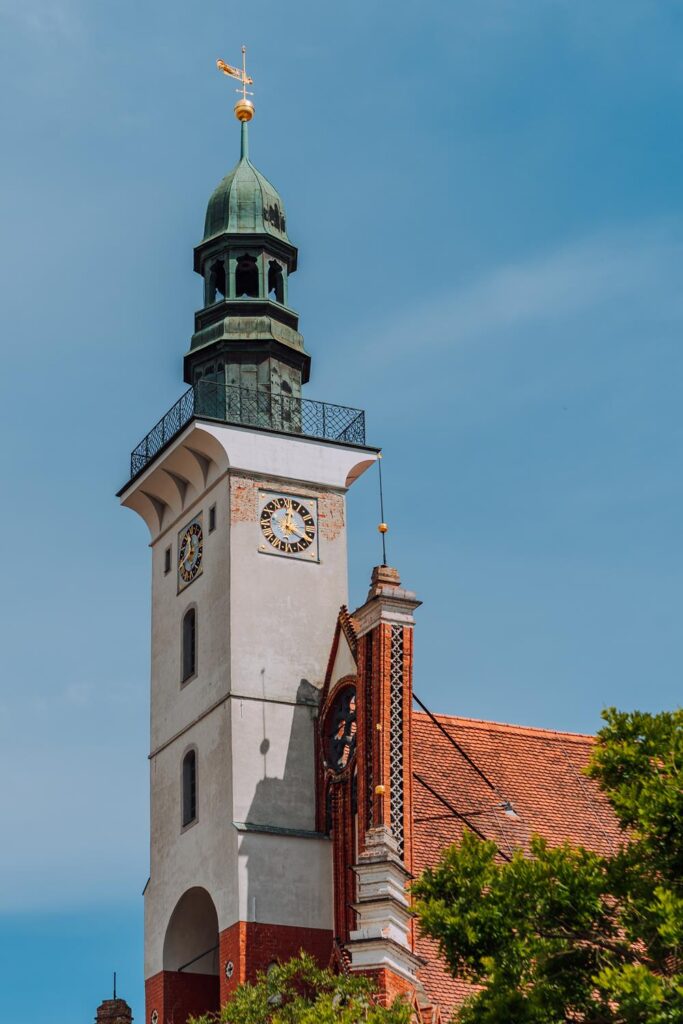
St. Mary’s Church
The Church of the Blessed Virgin Mary was the main parish church of Frankfurt (Oder), built in the North German Brick Gothic style in 1253. It was heavily damaged in 1945 during intense fighting. Its restoration only began in 1979. Today, it serves as a social and cultural center and a venue for various events.
It was not until 2002 that Russia returned 111 stolen medieval stained-glass windows from the years 1360-1370, which is the only successful restitution of art looted by the Soviets so far. These stained-glass windows constitute the most important cohesive collection of medieval stained-glass windows in all of Brandenburg.
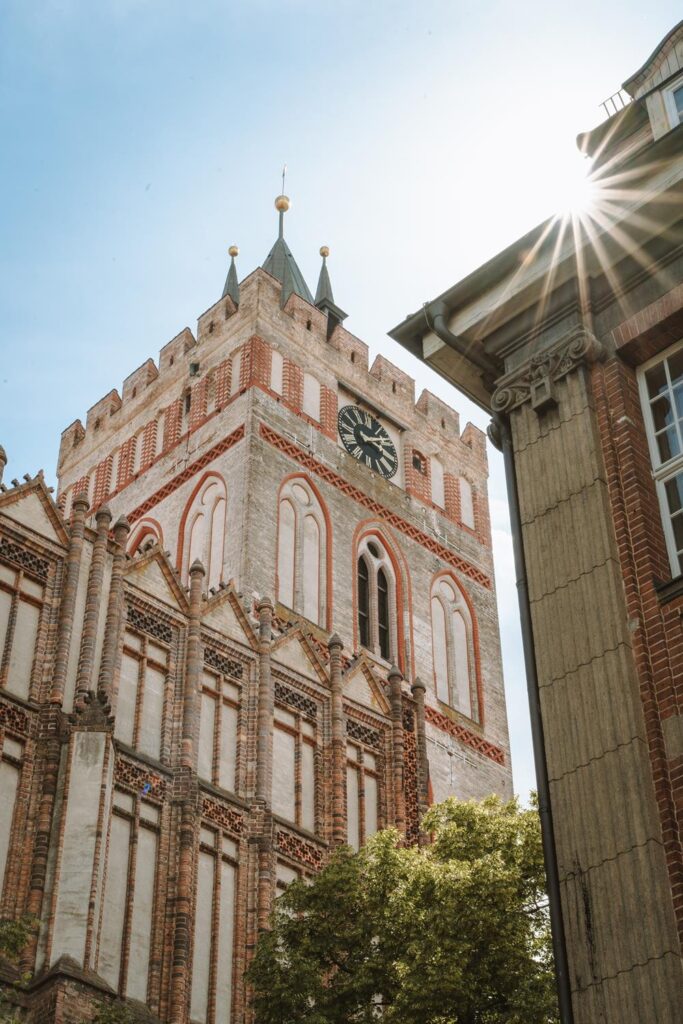
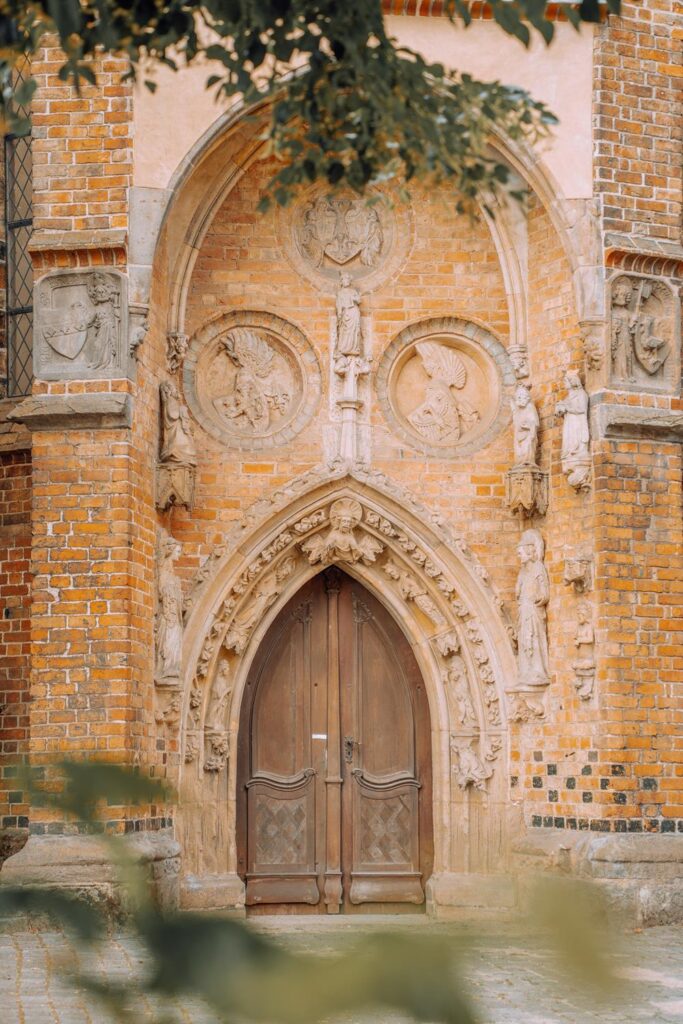
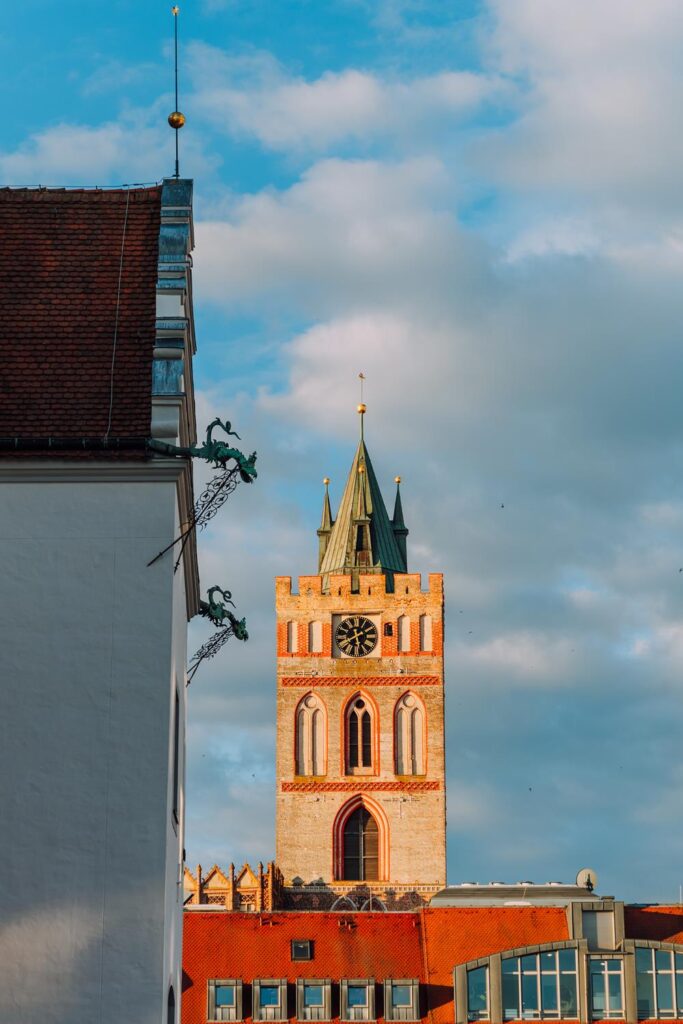
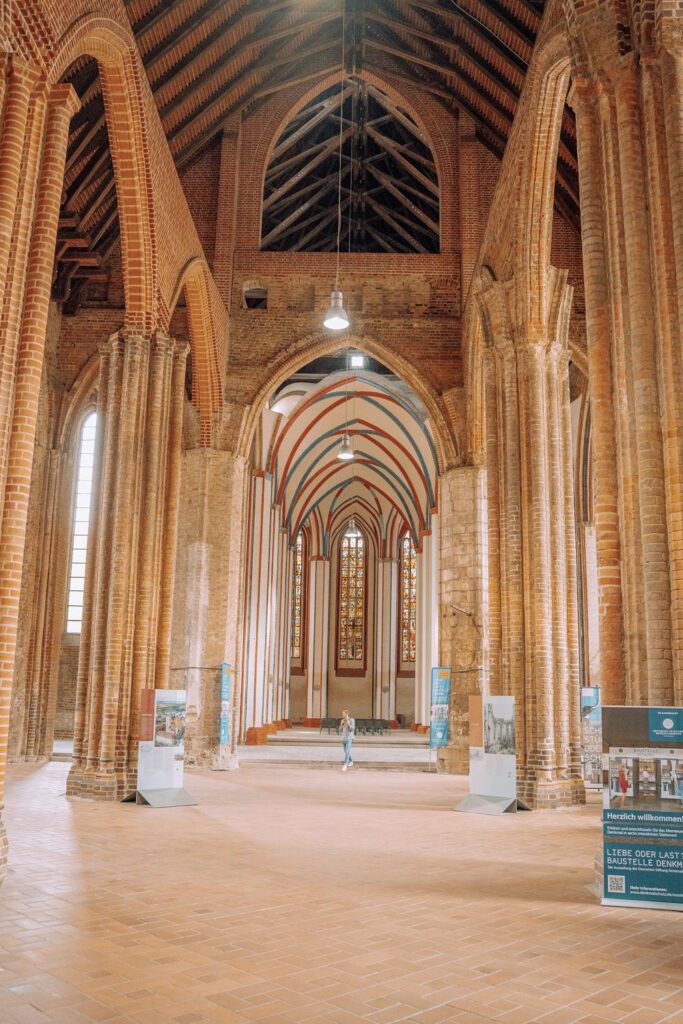
Tower of St. Mary’s Church
From the 67-meter tower, you can enjoy a remarkable view of Frankfurt and the Oder landscape.
From May to the end of September, the tower is open from 10 am to 5:30 pm, and from October to the end of April from 11 am to 3:30 pm. Admission is 3.5 EUR.
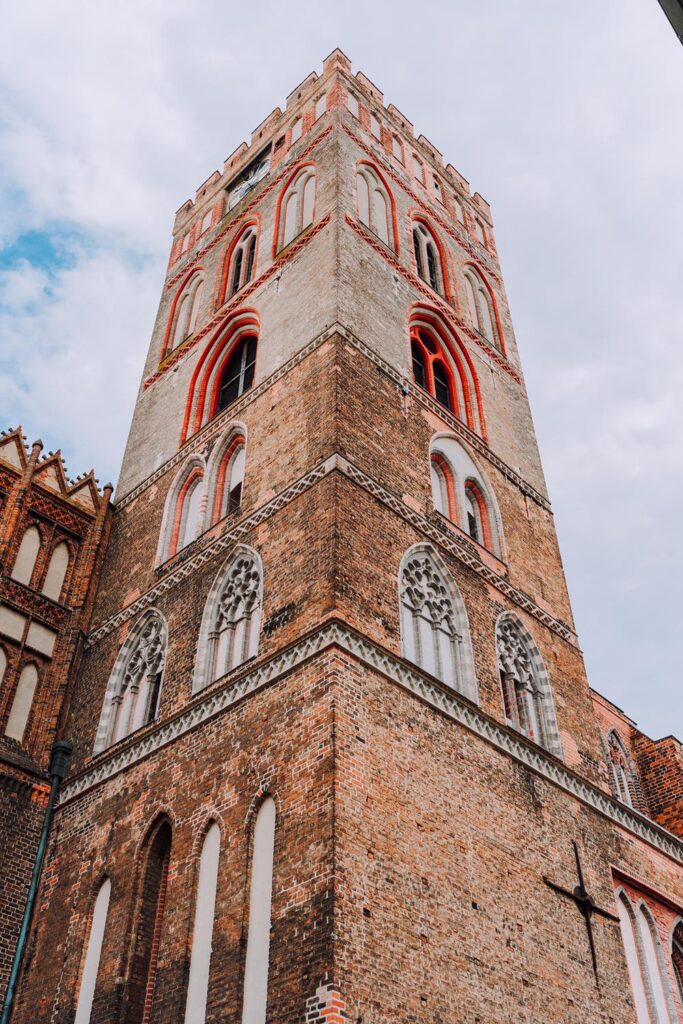
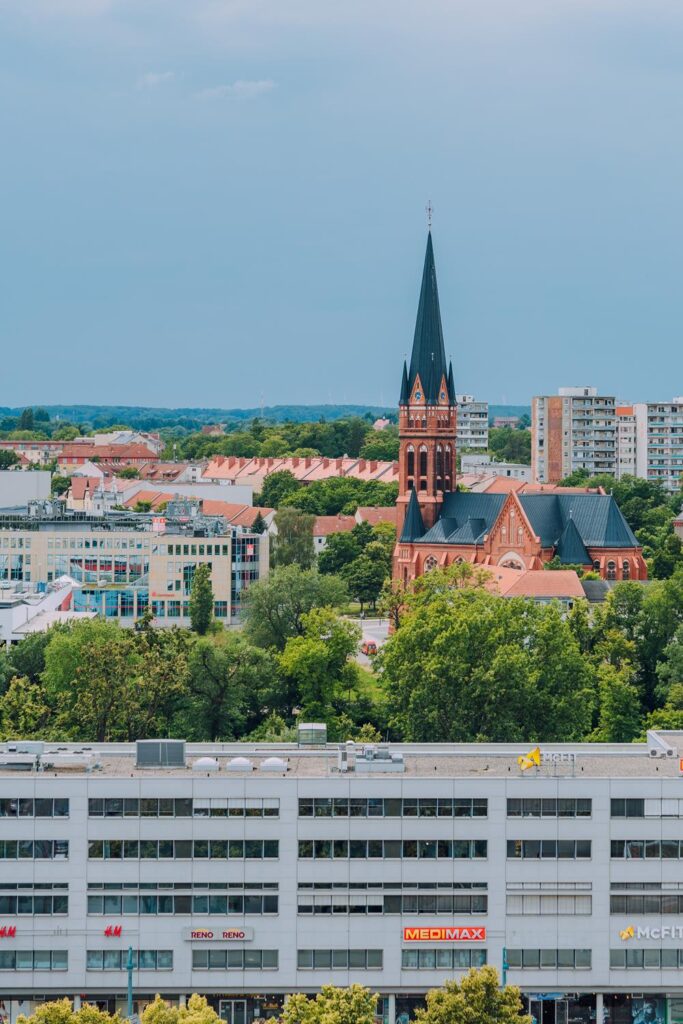
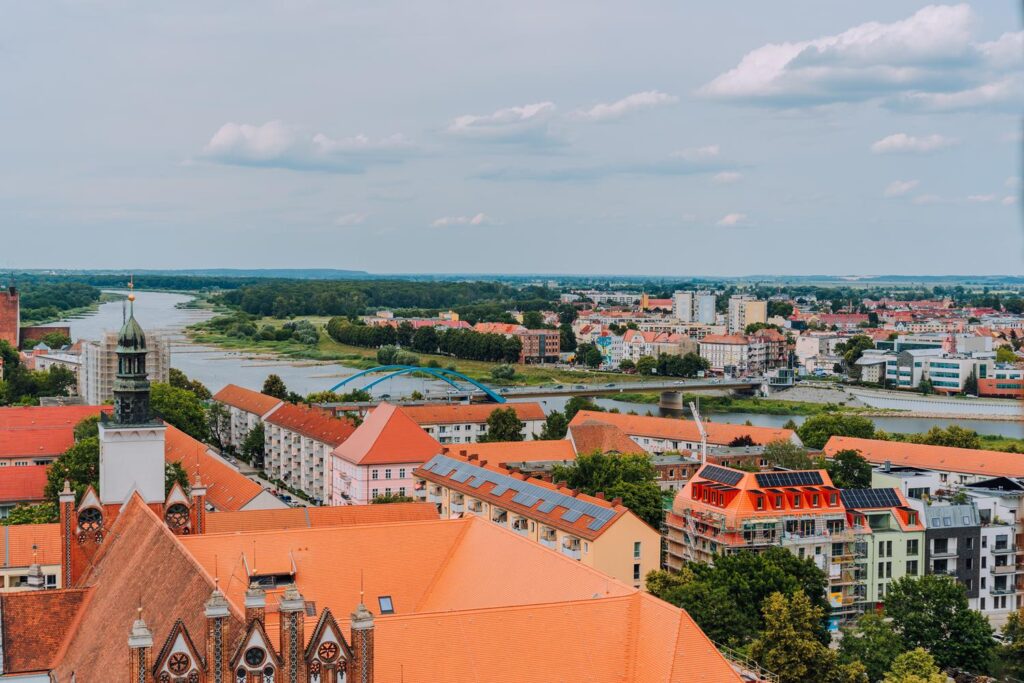
Bolfrashaus Building
This Renaissance building, transformed in the 16th century by councilor Michael Bolfras (hence its name), is one of the exceptional spots in Frankfurt. In the past, it was one of the most architecturally significant buildings in the city and still impresses today.
However, its history could have ended very differently. During the bombing on April 22, 1945, it was heavily damaged and waited for decades for the opportunity to be rebuilt. This finally happened in recent years, thanks to funds from the European Union. Today, the building houses a tourist information center (Polish-German).
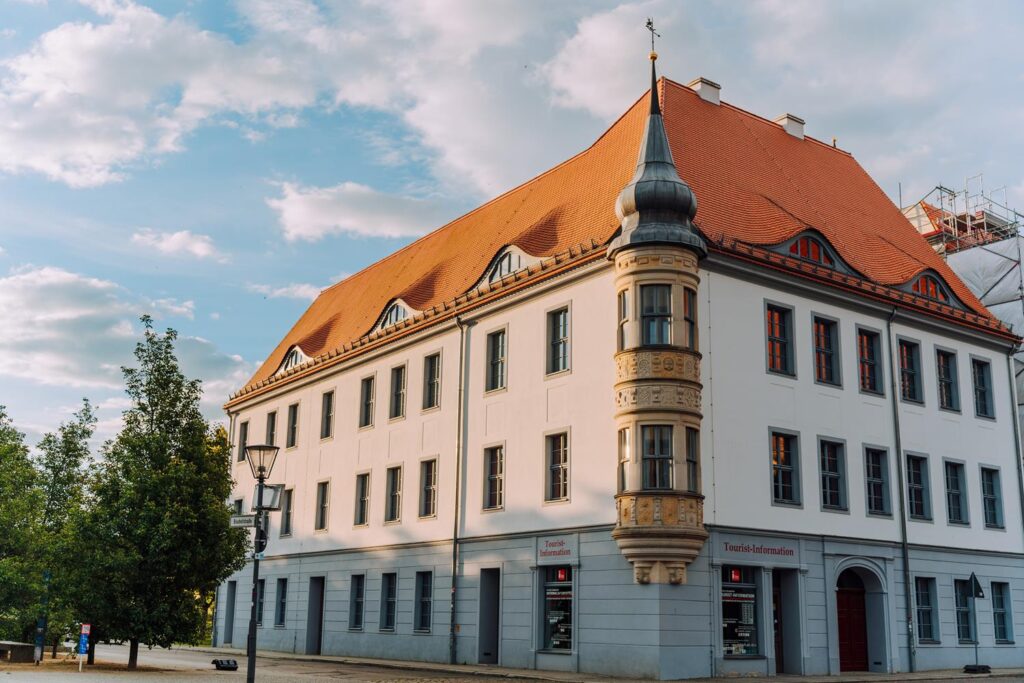
Promenade
The promenade stretches from Ziegenwerder to the winter port and is ideal for walks and relaxation with a splendid view of the Oder. There are walking paths, benches, and a playground for children. It’s a great place to start a walk along the river, admire nature, and the contrasting city.
Along the promenade, there’s the Peace Bell, commemorating the signing of the peace treaty on the Oder-Neisse border, resulting from the Görlitz Agreement. Every year, on September 1, the bell rings on the occasion of World Peace Day, symbolizing hope for lasting peace and cooperation between nations.
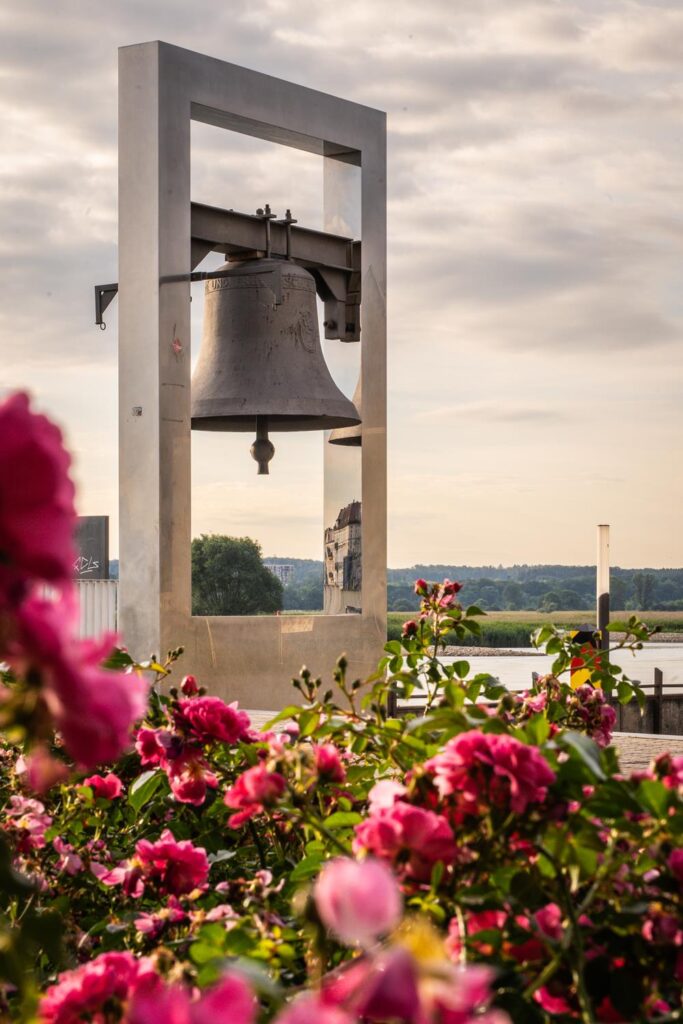
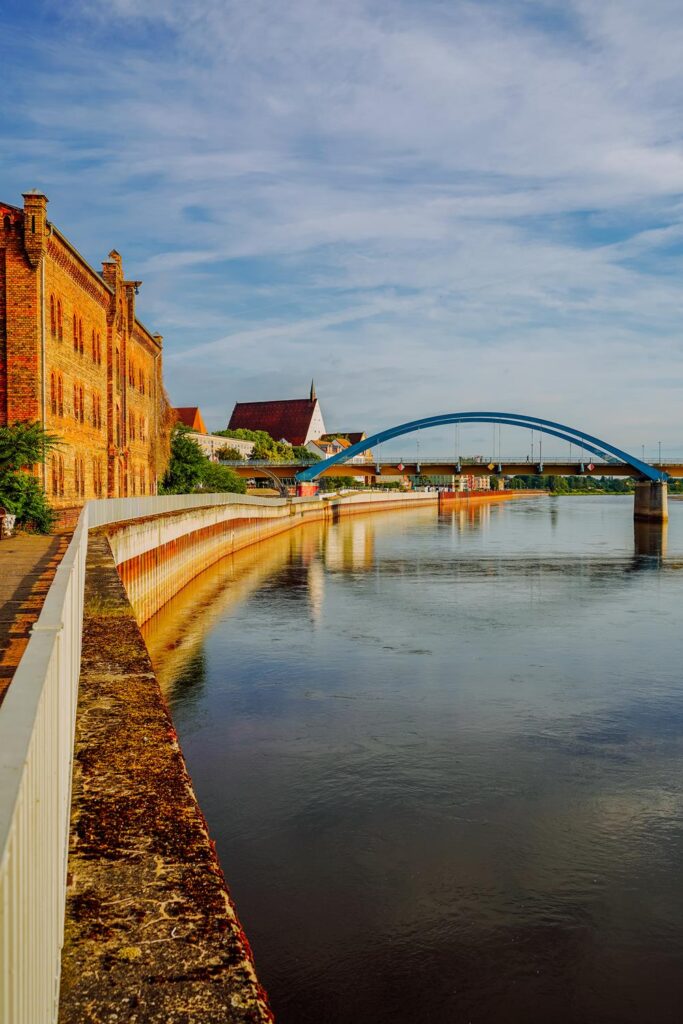
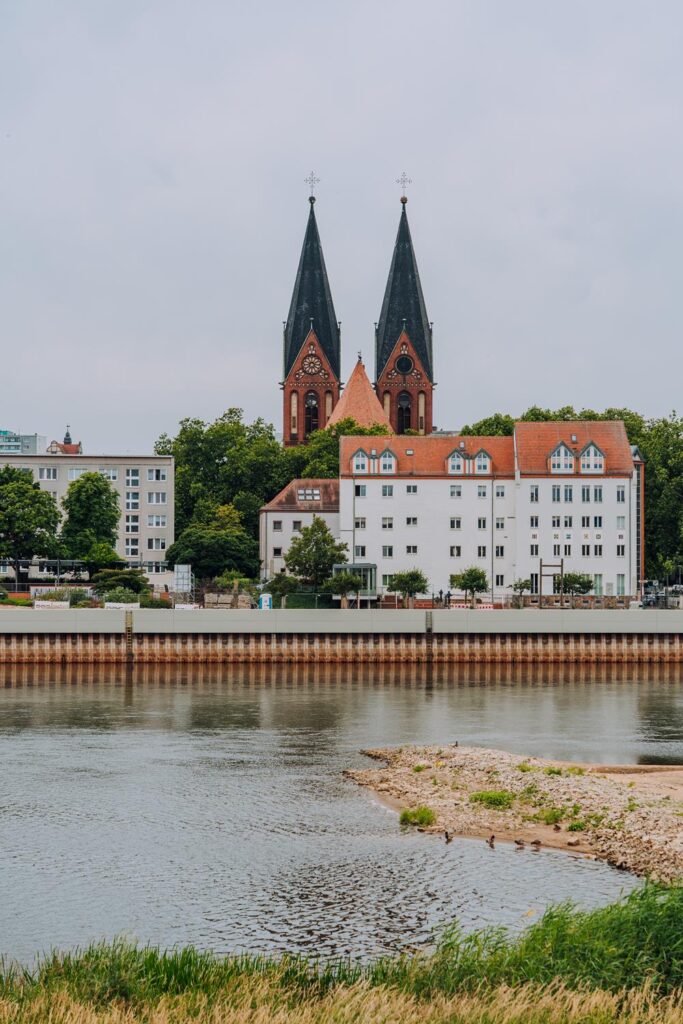
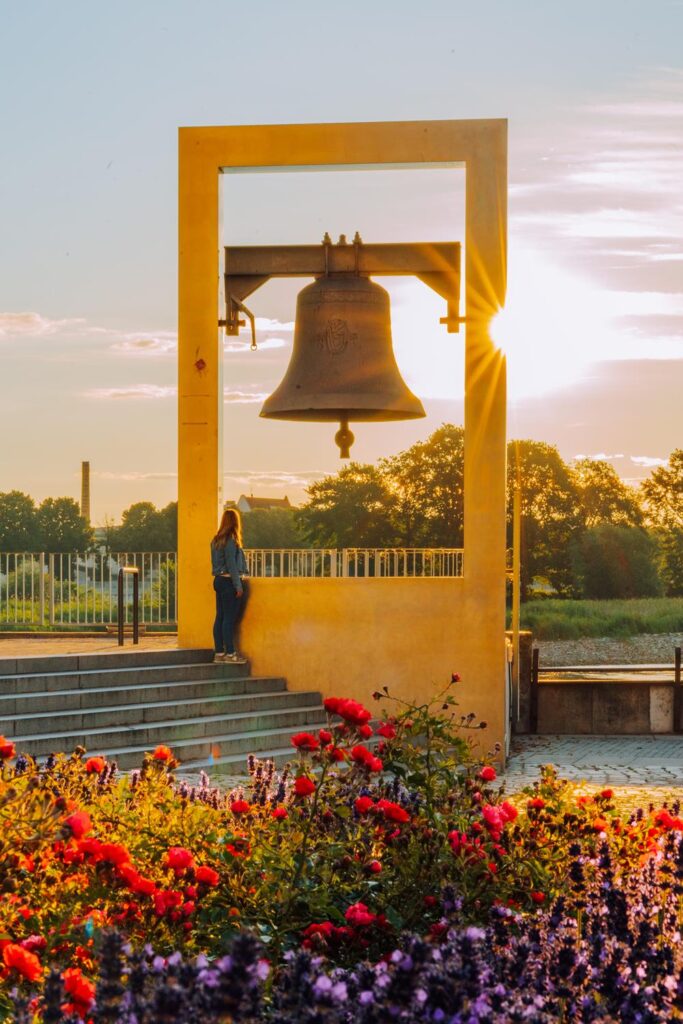
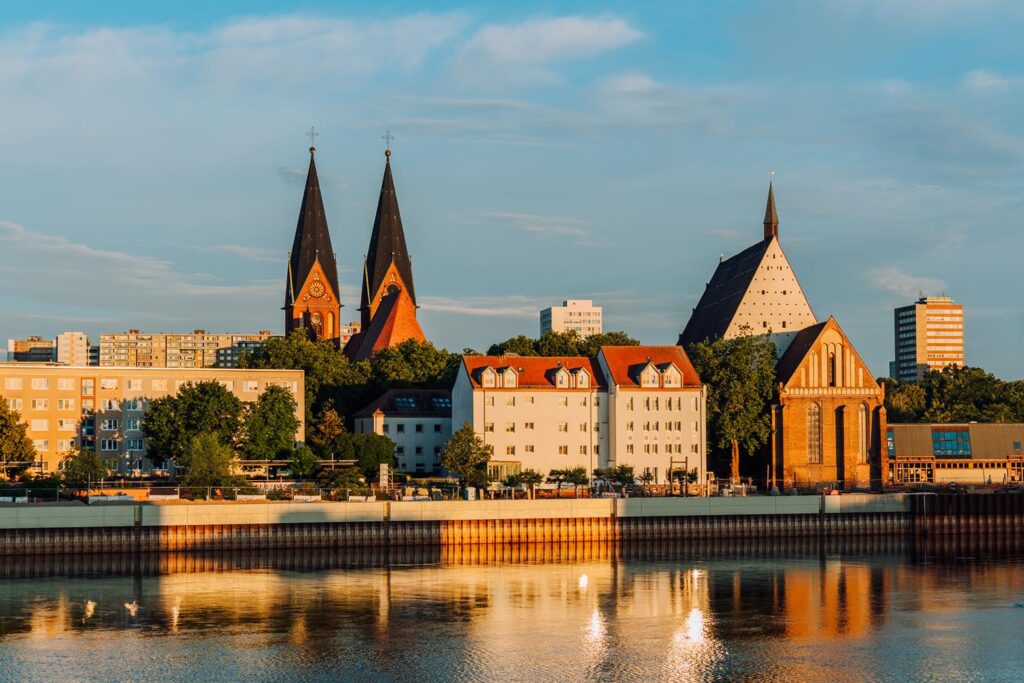
Parks in Frankfurt
Frankfurt (Oder) is famous for its numerous parks, which are true green oases in the city. One of the most charming is the park on Ziegenwerder Island, located on the Oder. It’s worth visiting while walking along the aforementioned promenade—it’s a real escape from the city, even though you’re still in the city.
Other parks worth noting include:
Lennépark – named after Peter Joseph Lenné, a famous German landscape architect. This park is characterized by carefully designed alleys, picturesque water bodies, and ancient trees.
Kleistpark – located in the central part of the city, named after Heinrich von Kleist, a German poet and playwright. It’s a place for residents to gather and for cultural events.
Gertraudpark – a smaller but charming park, named after St. Gertrude, the patron saint of gardeners.
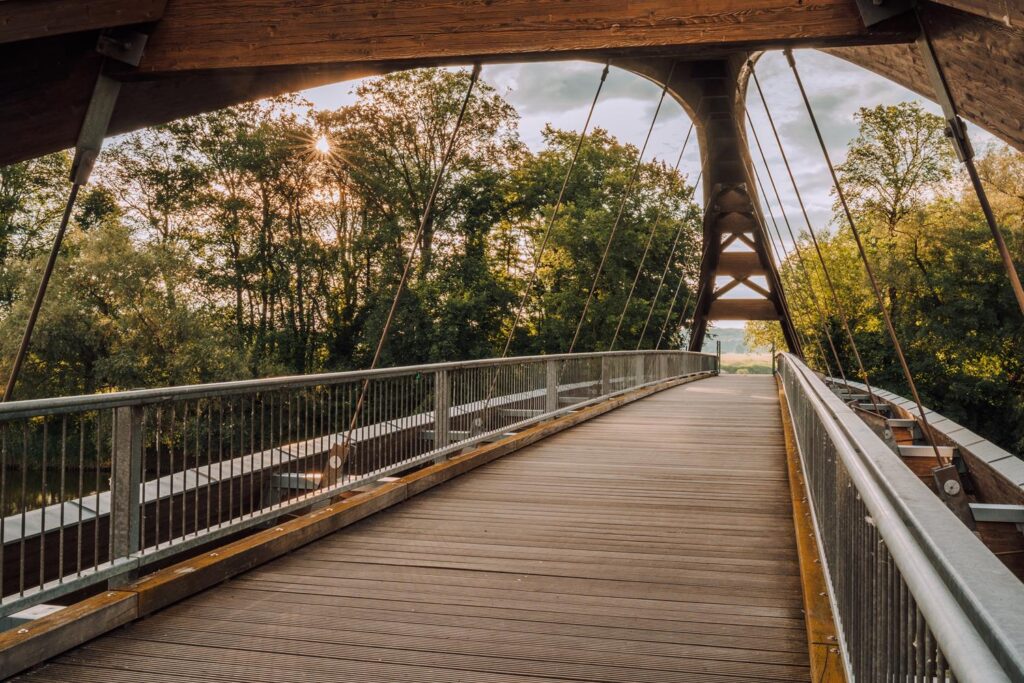
Helenesee
Speaking of Frankfurt (Oder), we can’t forget about Helenesee. This lake, also known as the “little Baltic Sea,” is one of the cleanest lakes in Germany. Located in the protected landscape area of the Oder-Spree lake region, it covers 250 hectares and is 8 km south of Frankfurt (Oder).
On the lake’s shore, there are beaches and numerous attractions for water sports enthusiasts. Add to this the available bike paths or walks in the area, picnics on grassy areas, and you have a perfect afternoon plan.
Art in Frankfurt (Oder)
Undeniably, Frankfurt is known for its art, especially alternative art. If you are interested in this topic, be sure to visit two places: MAGISTRALE KUNSTHALLE and KUMA Gerstenberg, where particularly in the evenings, artistic projects take place.
MAGISTRALE KUNSTHALLE is a place worth visiting to immerse yourself in the alternative art scene. You’ll find various exhibitions, innovative approaches, and lively performances here.
KUMA Gerstenberg, on the other hand, is a space that becomes a venue for art projects in the evenings, often combining visual art, theater, music, and other forms of artistic expression.
Comic-Brunnen Fountain.
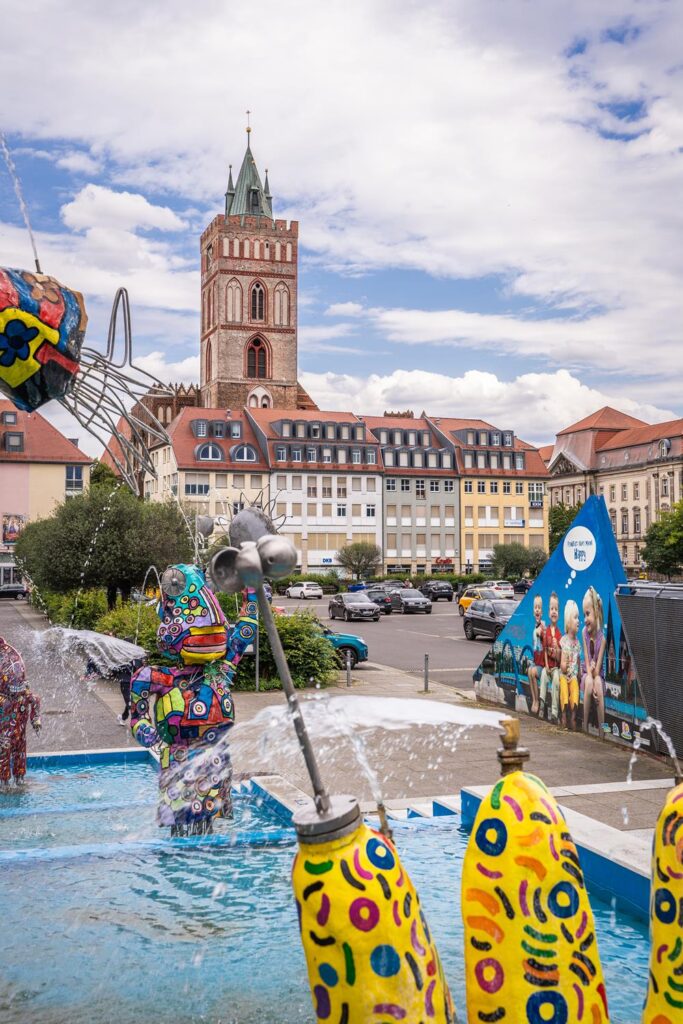
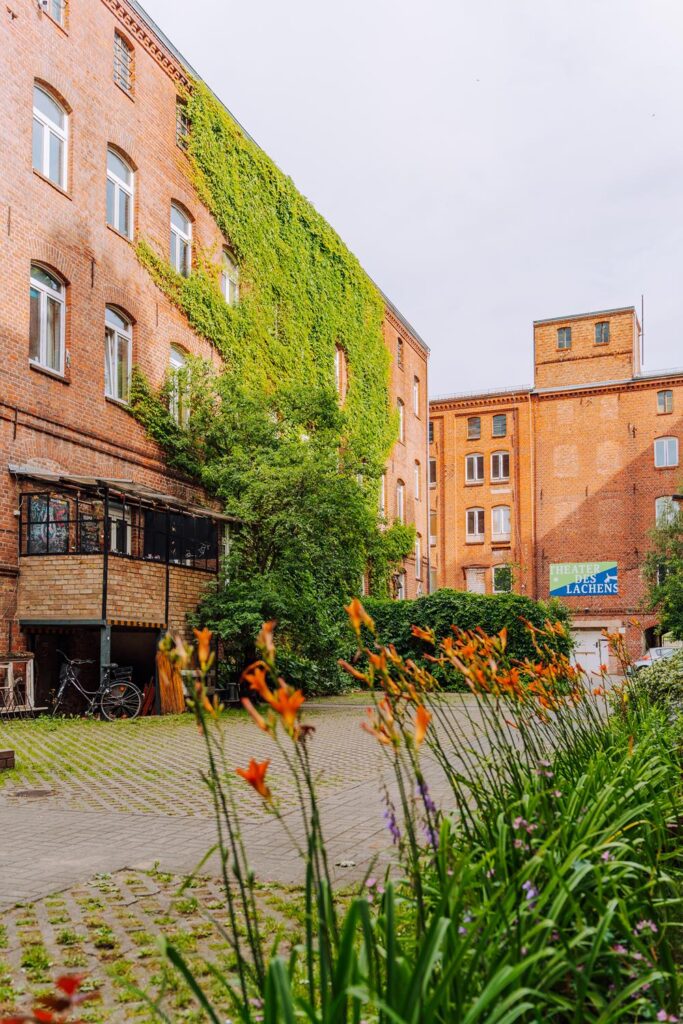
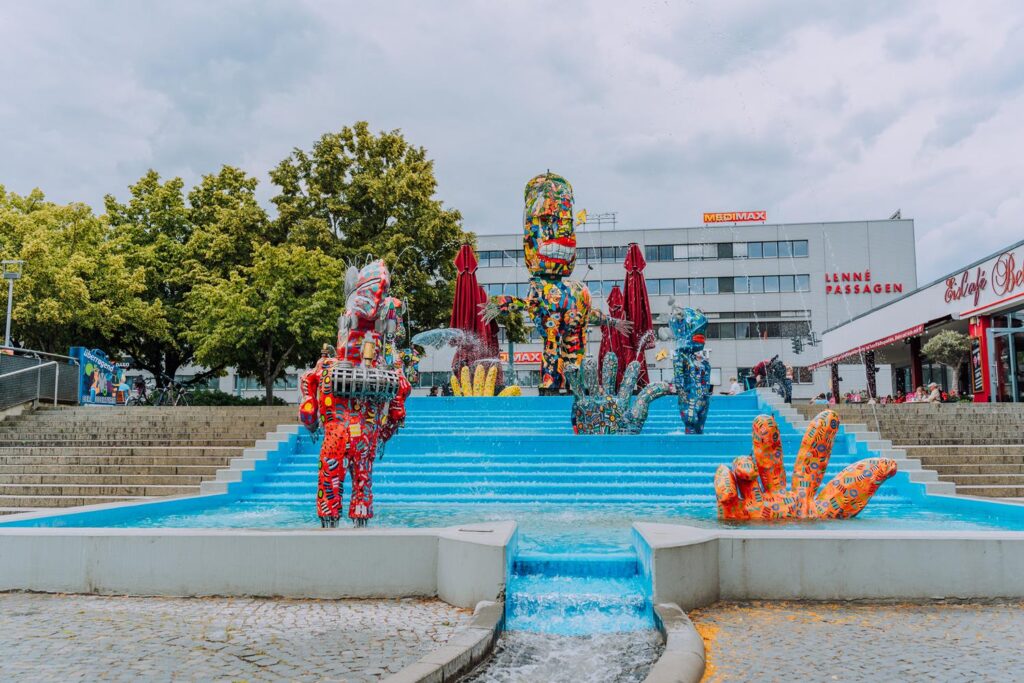
What’s Next?
These are not all the attractions of Frankfurt (Oder). During a one-day visit, you won’t see everything, but it allows you to delve into the history and atmosphere of the city. We moved on to Potsdam. You can see the travel plan at this link: What to see in Brandenburg? An original trip plan.
If you are planning trips around Germany, check out the following posts:
- What to See in Brandenburg? Original Plan for the Trip
- Angermünde – an Atmospheric Town Near the Polish Border
- Upper Lusatia – a plan for a trip around Saxony
- Exploring Bautzen: A Journey Through the City’s Best Attractions
- Görlitz – see the attractions of the city with over 4000 monuments
- What to Do in Leipzig: A Guide to the Must-See Attractions
- Exploring Lübeck: A Gem of Medieval Architecture and Cultural Heritage
- Hildesheim: Fascinating Attractions to Explore
- Saxony-Anhalt: Must-See Attractions You Can’t Miss
- Things To Do In Quedlinburg – Tips for a Day Trip
- Wernigerode: Unveiling the Fairy Tale Beauty of Germany’s Hidden Gem!